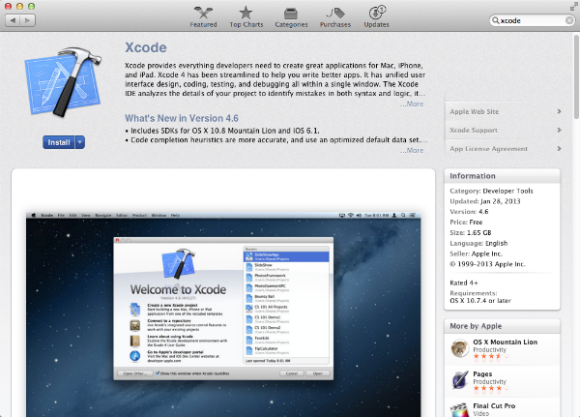Catalina Install Xcode Command Line Tools
Homebrew is a package managing tool. It’s more popular on Linux but is also used extensively on macOS. In fact, for apps that install as packages, Homebrew is the easiest way to remove them. Here’s how you can install Homebrew on macOS Catalina. In order to install Homebrew on macOS Catalina, you must have Xcode installed. Uninstalling Xcode Command Line Tools. To remove Xcode Command Line Tools (which is, by the way, different than the full Xcode IDE), you will need to go through two steps. Remove the files consisting the command line tools. Remove the receipts to prevent it from coming back again. The first step is easy enough. Install Command Line Tools Open your terminal to begin the process of installing command-line tools on macOS Catalina. With your terminal opened, type the command below into the prompt and press the return key to execute it. After executing the command below a pop-up window should open with the option to install. Referring to the help text, running xcode-select -r will reset xcode, which may help with install-time issues. Usage: xcode-select options Print or change the path to the active developer directory. This directory controls which tools are used for the Xcode command line tools (for example, xcodebuild) as well as the BSD development commands.
The latest version of Mac OS X, High Sierra, comes with Python 2.7 out of the box.
You do not need to install or configure anything else to use Python 2. Theseinstructions document the installation of Python 3.
The version of Python that ships with OS X is great for learning, but it’s notgood for development. The version shipped with OS X may be out of date from theofficial current Python release,which is considered the stable production version.
Doing it Right¶
Let’s install a real version of Python.
Before installing Python, you’ll need to install GCC. GCC can be obtainedby downloading XCode, the smallerCommand Line Tools (must have anApple account) or the even smaller OSX-GCC-Installerpackage.
Note
If you already have XCode installed, do not install OSX-GCC-Installer.In combination, the software can cause issues that are difficult todiagnose.
Note
If you perform a fresh install of XCode, you will also need to add thecommandline tools by running xcode-select--install on the terminal.
While OS X comes with a large number of UNIX utilities, those familiar withLinux systems will notice one key component missing: a package manager.Homebrew fills this void.
To install Homebrew, open Terminal oryour favorite OSX terminal emulator and run
The script will explain what changes it will make and prompt you before theinstallation begins.Once you’ve installed Homebrew, insert the Homebrew directory at the topof your PATH environment variable. You can do this by adding the followingline at the bottom of your ~/.profile file
Now, we can install Python 3:
This will take a minute or two.
Pip¶
Homebrew installs pip pointing to the Homebrew’d Python 3 for you.
Working with Python 3¶

At this point, you have the system Python 2.7 available, potentially theHomebrew version of Python 2 installed, and the Homebrewversion of Python 3 as well.
Catalina Install Xcode Command Line Tools List
will launch the homebrew-installed Python 3 interpreter.
Catalina Install Xcode Command Line Tools Free
will launch the homebrew-installed Python 2 interpreter (if any).
will launch the homebrew-installed Python 3 interpreter.
If the Homebrew version of Python 2 is installed then pip2 will point to Python 2.If the Homebrew version of Python 3 is installed then pip will point to Python 3.
The rest of the guide will assume that python references Python 3.
Pipenv & Virtual Environments¶
The next step is to install Pipenv, so you can install dependencies and manage virtual environments.
A Virtual Environment is a tool to keep the dependencies required by different projectsin separate places, by creating virtual Python environments for them. It solves the“Project X depends on version 1.x but, Project Y needs 4.x” dilemma, and keepsyour global site-packages directory clean and manageable.
For example, you can work on a project which requires Django 1.10 while alsomaintaining a project which requires Django 1.8.

So, onward! To the Pipenv & Virtual Environments docs!
This page is a remixed version of another guide,which is available under the same license.